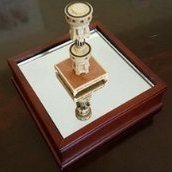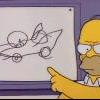-
Posts
470 -
Joined
-
Last visited
-
 Erik W reacted to a post in a topic:
Beavers Prize 1777 by Mike Y - 1:48 - POF - Hahn style
Erik W reacted to a post in a topic:
Beavers Prize 1777 by Mike Y - 1:48 - POF - Hahn style
-
 Erik W reacted to a post in a topic:
Syren Ship Model Company News, Updates and Info.....(part 2)
Erik W reacted to a post in a topic:
Syren Ship Model Company News, Updates and Info.....(part 2)
-
 Erik W reacted to a post in a topic:
HMS Bellerophon 1786 by AON – scale 1:64 – 74-gun 3rd Rate Man of War - Arrogant-Class
Erik W reacted to a post in a topic:
HMS Bellerophon 1786 by AON – scale 1:64 – 74-gun 3rd Rate Man of War - Arrogant-Class
-
 Erik W reacted to a post in a topic:
Syren Ship Model Company News, Updates and Info.....(part 2)
Erik W reacted to a post in a topic:
Syren Ship Model Company News, Updates and Info.....(part 2)
-
 Erik W reacted to a post in a topic:
L'Amarante by marsalv - 1:36 - POF
Erik W reacted to a post in a topic:
L'Amarante by marsalv - 1:36 - POF
-
 Erik W reacted to a post in a topic:
HMS Winchelsea 1764 by Frank Wouts 1/48
Erik W reacted to a post in a topic:
HMS Winchelsea 1764 by Frank Wouts 1/48
-
 Erik W reacted to a post in a topic:
The Hayling Hoy 1760 by Stuntflyer (Mike) - 1:48 scale
Erik W reacted to a post in a topic:
The Hayling Hoy 1760 by Stuntflyer (Mike) - 1:48 scale
-
 Erik W reacted to a post in a topic:
HMS Bellerophon 1786 by AON – scale 1:64 – 74-gun 3rd Rate Man of War - Arrogant-Class
Erik W reacted to a post in a topic:
HMS Bellerophon 1786 by AON – scale 1:64 – 74-gun 3rd Rate Man of War - Arrogant-Class
-
 Erik W reacted to a post in a topic:
HMS PEGASUS by giampieroricci - Scale 1:36 - Swan-Class Sloop from plans by David Antscherl & Greg Herbert
Erik W reacted to a post in a topic:
HMS PEGASUS by giampieroricci - Scale 1:36 - Swan-Class Sloop from plans by David Antscherl & Greg Herbert
-
 Erik W reacted to a post in a topic:
HMS Winchelsea 1764 by Frank Wouts 1/48
Erik W reacted to a post in a topic:
HMS Winchelsea 1764 by Frank Wouts 1/48
-
 yvesvidal reacted to a post in a topic:
HM Cutter Cheerful 1806 by Erik W - 1:48 scale
yvesvidal reacted to a post in a topic:
HM Cutter Cheerful 1806 by Erik W - 1:48 scale
-
 yvesvidal reacted to a post in a topic:
HM Cutter Cheerful 1806 by Erik W - 1:48 scale
yvesvidal reacted to a post in a topic:
HM Cutter Cheerful 1806 by Erik W - 1:48 scale
-
 yvesvidal reacted to a post in a topic:
HM Cutter Cheerful 1806 by Erik W - 1:48 scale
yvesvidal reacted to a post in a topic:
HM Cutter Cheerful 1806 by Erik W - 1:48 scale
-
 alde reacted to a post in a topic:
HM Cutter Cheerful 1806 by Erik W - 1:48 scale
alde reacted to a post in a topic:
HM Cutter Cheerful 1806 by Erik W - 1:48 scale
-
 alde reacted to a post in a topic:
HM Cutter Cheerful 1806 by Erik W - 1:48 scale
alde reacted to a post in a topic:
HM Cutter Cheerful 1806 by Erik W - 1:48 scale
-
 alde reacted to a post in a topic:
HM Cutter Cheerful 1806 by Erik W - 1:48 scale
alde reacted to a post in a topic:
HM Cutter Cheerful 1806 by Erik W - 1:48 scale
-
 dvm27 reacted to a post in a topic:
HM Cutter Cheerful 1806 by Erik W - 1:48 scale
dvm27 reacted to a post in a topic:
HM Cutter Cheerful 1806 by Erik W - 1:48 scale
-
 MikeB4 reacted to a post in a topic:
HM Cutter Cheerful 1806 by Erik W - 1:48 scale
MikeB4 reacted to a post in a topic:
HM Cutter Cheerful 1806 by Erik W - 1:48 scale
-
 MikeB4 reacted to a post in a topic:
HM Cutter Cheerful 1806 by Erik W - 1:48 scale
MikeB4 reacted to a post in a topic:
HM Cutter Cheerful 1806 by Erik W - 1:48 scale
-
 egkb reacted to a post in a topic:
HM Cutter Cheerful 1806 by Erik W - 1:48 scale
egkb reacted to a post in a topic:
HM Cutter Cheerful 1806 by Erik W - 1:48 scale
-
I haven't posted an update in a while. With warm weather and long days, I've been enjoying springtime outdoor activities, so work on my Cheerful has been on a seasonal back burner. I have found some time to get the shelf built where Cheerful will eventually live. I'm using a shelf that is made from edge glued pieces of wood, I've sanded it down, rounded the edges, and stained it using an oil based stain. It's an odd size of 33 1/2 inches long by 14 3/4 inches wide. It looks big compared to the hull of the ship, but as you can see from the spars I've temporarily laid out, when fully rigged, the ship will be much larger. The shelf is a couple of inches longer at both the bow and stern than the length of the ship with the boom and bowsprit installed, and an inch and a half wider than the main spar. I located the studs in the wall and attached the shelf with two 10" x 10" L shaped steel brackets screwed into the studs with 2" screws. As a fan of overkill, I think the shelf would easily hold 100 pounds. The goal was to have it be as solid as possible so that when the ship is finished, if I ever bump the shelf, it won't move at all and damage the ship. I'll just have to live with a bigger bruise if I bump it. Haha! Also, I put a lot of thought into what height I wanted to display the ship. After much measuring, and taping the fully rigged plans to the wall, I settled on a shelf height of 46 1/4 inches, which when the Cheerful is on it's base, puts its cap rail height at 52". The photo is taken from my eye height. This photo is a quick grab shot with my phone. When the ship is finished and ready for display, those pictures on the wall will be moved. Also, it's hard to see in the photo, but there is a 2 inch gap between the stern end of the shelf and the wall. I didn't want to center the shelf between the wall on the left and the edge of the closet door on the right, because with it sticking out almost 15 inches I'm concerned it would be too easy to bump into. That, and it will be easy enough to view the ship from straight in front of it as is. Erik
-
A quick update. Yesterday I received the brass name plates I had custom made for me. They're not permanently fixed to the base yet. The small one gives a shout out to my dad who got me into modeling as a kid, and always has been my biggest cheerleader when I showed him what I was building. The name plates are a little hard to see in the photos with the Cheerful mounted. The photos are taken in front of a window, so are backlit. The ship will be displayed on the opposite wall, so the base won't be shaded, and the plates will be easy to read. My next steps now are to get the shelf and mounting hardware, and get that built. Erik
-
Thanks for the nice words guys!.. Yeah, my Cheerful suddenly looks to be in a more finished state as it sits temporarily on the base. Glenn, I have my order in with the local place that makes all the brass name plates for my projects. Using the same style name plate also gives a familial look to the models displayed in my home office. Erik
-
Thanks for all the likes folks. I wasn't planning on posting an update today, but I think the display turned out well, so here are some photos. I had no idea what I wanted to do for a display base. After browsing through what other folks have done, I settled on brass pedestals on a solid wood base. I liked the look of Glenn's (glbarlow) base for his Cheerful build. So as they say, with imitation being the sincerest form of flattery, I pretty much duplicated what he had done. The pedestals are from Model Expo and the wood base is made by Amati (which I ordered from Ages of Sail). When the pedestals arrived I was disappointed that not only did they appear different colors, but the profiles were actually different. I purposefully ordered them different heights since the Cheerful's keel rides deeper at the stern. The photos on the Model Expo site are just generic and aren't of the actual pedestals. The profile of the lower pedestal is fatter at the bottom of the shaft and flares out more gradually. I could have lived with the different profiles I guess, but I figured out a way to chuck the pedestal into my power drill. Using a couple of sharp files and my calipers to measure, I turned the pedestal to better match the profile of the taller pedestal. Once I had this done I began the slow process of filing the notches in the pedestals to exactly match the keel of the ship. This took days, but I'm happy with the results. The keel fits in snuggly enough to have no room to move or wiggle, but still not be tight enough to damage the wood. To finish the pedestals off, I dry sanded them with 400 grit sandpaper. This made the finish look the same between the two, and gave them the brushed brass look I wanted. The hardwood base from Amati is great. It's a rare piece of wood these days that is level and square with no warping (if you've shopped for wood at your local hardware store, you know what I mean). I thought I had ordered the bare wood version, so was surprised when I opened the box that it was stained. Since I like the color though, it saves me from picking a stain and doing it myself. The base has a satin finish, which I like, not too mat and not too glossy. Erik
-
I hit what I consider a major milestone. I finished all the woodwork on my Cheerful today! A big accomplishment considering I started work on this model over 9 years ago! Admittedly with a 6 1/2 year hiatus . . . After my years long break, I started working on Cheerful daily again in August 2023. The last wooden bits to finish were the entryway stanchions and the anchors. The stanchions were turned on my Dremel from 1/16" square stock. These were straight forward, and very similar to turning the belaying pins in the Dremel. All 4 are close to identical, but later on when I mount them I'll use pairs on each side that match one another the most closely. The anchors were made from Chuck's mini kit. These were pretty straight forward as well. Since wood is representing the iron of the anchors, I used 1000 grit sand paper to finish the surface to remove any trace of wood grain before painting. I carefully sanded any sharp edges slightly to give a realistic cast iron look. I thinned the paint more than I usually do to avoid any hint of brush strokes. The pudenning on the rings at the top of the anchors was a real pain in the rear to do! I didn't have any .008" brown rope on hand (since it's not listed on the Cheerful rope list, I hadn't bought any). I did have some brown thread I had bought at a craft store for seizings way back when I built my Longboat, that turned out to be too big for that use. It measures in at around .007" diameter, so it's the right size. Once the pudenning was done the thread was a bit fuzzy so I wet it with thinned white glue and pressed it tight with my fingers. That did the trick. The pudenning isn't my best work, but the anchor rings turned out acceptable, all things considered. Lastly I lightly applied dark rust weathering powders to the stanchions and painted parts of the anchors to enhance the iron look. The last photo below shows all the woodwork completed. I realize it's not the norm to complete all the woodwork before starting any of the rigging. One of the main reasons I did this is the ship is still compact in size at this point, before adding the bowsprit, mast, etc. My space is very limited, so rather than start the rigging now, my next steps are actually to figure out what I'm going to do for a shelf. I know the location in my house of where the Cheerful will live. I just need to actually get the shelf acquired/built first, so I have somewhere off my desk to put a partially rigged ship if need be. While I'm at it, I also want to figure out what I'm going to do for a permanent display base, and get that built too. The ship is already fragile enough, so I don't want to be trying to fit a base to the ship when it's fully rigged. Erik
-
Thanks for the kind words Todd, and thanks for the likes from other folks. In a cloud of sawdust I shaped the last two spars this week. Here are a few photos of the topsail yard and the lower yard. They still need the additional wood pieces fabricated and added before painting, but the shaping stage is complete. For some reason the taper on the topsail yard looks off in the photos, but when I measured again, it's accurate to .005" diameter when compared to the plans. Chalk it up to foreground lens distortion then. Erik
-
This past week felt a lot like the week before. The boom fabrication is nearly identical to the gaff. When I had started tapering the boom I realized I would die of old age if I removed all the material I needed to by hand. So I gave my old power drill a try again. I hadn't had much success using the drill before. After making the square stock an octagon, I used the shoe shine method to make the stick round. I then chuckled it into the drill. I looped a two inch wide strip of sand paper over the boom, grit side down, and pinched it closed with my free hand. So, it stabilized the free end while sanding at the same time. This worked great. First I used 60 grit sand paper, and then 150. I hand finished sanding with 220 grit and then 400 grit sand paper. Like everything else on this build, I'm getting the hang of what I'm doing right before moving on to the next step. Haha. Erik
-
As always, thanks for the likes. I continue to make progress on the spars. I finished the gaff this week. I figured I'd start with the smaller one before I move onto the boom, which is essentially the same thing but bigger. This was pretty straight forward, though like the topmast, rounding it by hand is a bit tricky due to its small diameter. While it's made following the plans, I test fit it to the mast itself, making sure not to remove too much material by accident from the part that butts up against the mast. Erik
-
I finished the mast and topmast. The topmast proved to be more challenging than I had anticipated. Mostly due to the small diameter. With the way I'm manually making these spars round, I had to take extra care not to accidentally break the topmast while shaping it. We typically gloss over any mistakes we make. I decided I'd show one of mine, and the correction. I had measured incorrectly when drilling the lower sheeve on the topmast. I didn't realize this until I was cutting the sheeve out. It was way too long. It looked weird, knowing you wouldn't see a sheeve that was longer than the mast diameter. Since this was the last step of shaping the topmast after days of working on it, I decided to fill the misplaced hole and drill a new one, rather than scrap the whole thing and start over. Luckily this portion of the topmast is painted, so it's easy to hide the mistake. I used .035" diameter styrene to plug the drilled hole, and a .035" styrene half round in the channel I had carved out on one side. I used styrene rather than wood since it's what I had on hand, and it's easier to work with at that small size. Speaking of styrene, when I test fit the mast to the topmast I realized the square tennon at the top of the mast was about .030" too shallow. I wound up super-gluing a sqaure of .030" thick styrene to the top (which you can also see in one of the photos below). I realize using styrene on a wooden ship build may seem a bit odd/nontraditional, but since these areas are painted, the results look the same as using any other material. The last two photos are the mast and topmast test fit together. There is a slight bit of play in both, so what you see is not the final positioning in regards to rake, and how the two masts line up with one another. In looking for a background large enough to photograph the entire height, I think the blue wall works pretty well. Though I felt kind of funny lying on my stomach to take the photos! Erik
-
Thanks for all the likes, and kind words guys. I appreciate it! Al, yeah, as I said in one of my above posts, I like putting the effort into the photography aspect. I usually build smaller models, so it's been a challenge photographing something this size at times. And to answer your question, yes, I do all the dusty work there. Since it's in my home office, I am constantly using a small shop-vac to clean up sawdust while I'm working, and I wipe the work surface down with a damp sponge after each time I've worked on the build. One of the reasons I'm making all the spars before I start rigging is so I can get past the sawdust producing stage and finally not have to be constantly cleaning up sawdust. While it looks clean, that room needs a deep cleaning soon. Here is a closeup of how my work area looks after I put my tools away (it helps I don't have many), and do a quick cleanup after every build session. Erik
-
I finished the woodwork on the mast. Everything is square and lines up as it should. The further I get into this project the more I am compulsively measuring, test fitting, etc. It really does prevent any nasty surprises down the road. I made the mast tree so that all the parts would fit with light press fitting, so the tolerances are tight enough to assemble it without the need for glue. This made it easier to test fit on the mast. I did use glue for the final assembly. The cheeks were a bit tricky. Being new to this ship building gig, I wasn't quite sure how all the shapes are accomplished. I have David Antscherl's book The Fully Framed Model - Rigging a Sixth Rate Sloop of 1767-1780 - Volume IV which has some clear photos of what material to take off the mast. Though I see a couple of areas in my photos below that need some touch up, overall I'm happy withe the way the mast turned out. Erik
-
Thanks for the likes folks, and kind words Mike. I finished shaping the mast over the last week. I had planned on turning it using my power drill after sanding it to 8 sides. I couldn't get it to not wobble when chucked in though. I wound up just using the same "shoe-shine' hand sanding method that I did with the bowsprit. This was time consuming, but admittedly I like the control with removing material by hand. It's easier to not accidentally remove too much. After making the bowsprit, and now the mast, I'm getting the hang of how to do this by hand. So I'll use the same methods for the remaining spars. I filed the square tennon at the top of the mast, and lastly cut the sheeve in. Surprisingly, the mast fit into the mast coat with barely any additional sanding. It sits at the correct angle when compared to the plans. Also, once I get to the point of attaching the mast and spars permanently, I have no idea how, or where, I'm going to be able to photograph the build in it's entirety! Erik
About us
Modelshipworld - Advancing Ship Modeling through Research
SSL Secured
Your security is important for us so this Website is SSL-Secured
NRG Mailing Address
Nautical Research Guild
237 South Lincoln Street
Westmont IL, 60559-1917
Model Ship World ® and the MSW logo are Registered Trademarks, and belong to the Nautical Research Guild (United States Patent and Trademark Office: No. 6,929,264 & No. 6,929,274, registered Dec. 20, 2022)
Helpful Links
About the NRG
If you enjoy building ship models that are historically accurate as well as beautiful, then The Nautical Research Guild (NRG) is just right for you.
The Guild is a non-profit educational organization whose mission is to “Advance Ship Modeling Through Research”. We provide support to our members in their efforts to raise the quality of their model ships.
The Nautical Research Guild has published our world-renowned quarterly magazine, The Nautical Research Journal, since 1955. The pages of the Journal are full of articles by accomplished ship modelers who show you how they create those exquisite details on their models, and by maritime historians who show you the correct details to build. The Journal is available in both print and digital editions. Go to the NRG web site (www.thenrg.org) to download a complimentary digital copy of the Journal. The NRG also publishes plan sets, books and compilations of back issues of the Journal and the former Ships in Scale and Model Ship Builder magazines.





.thumb.jpg.4fb5a55154822f425a120f59c039f683.jpg)